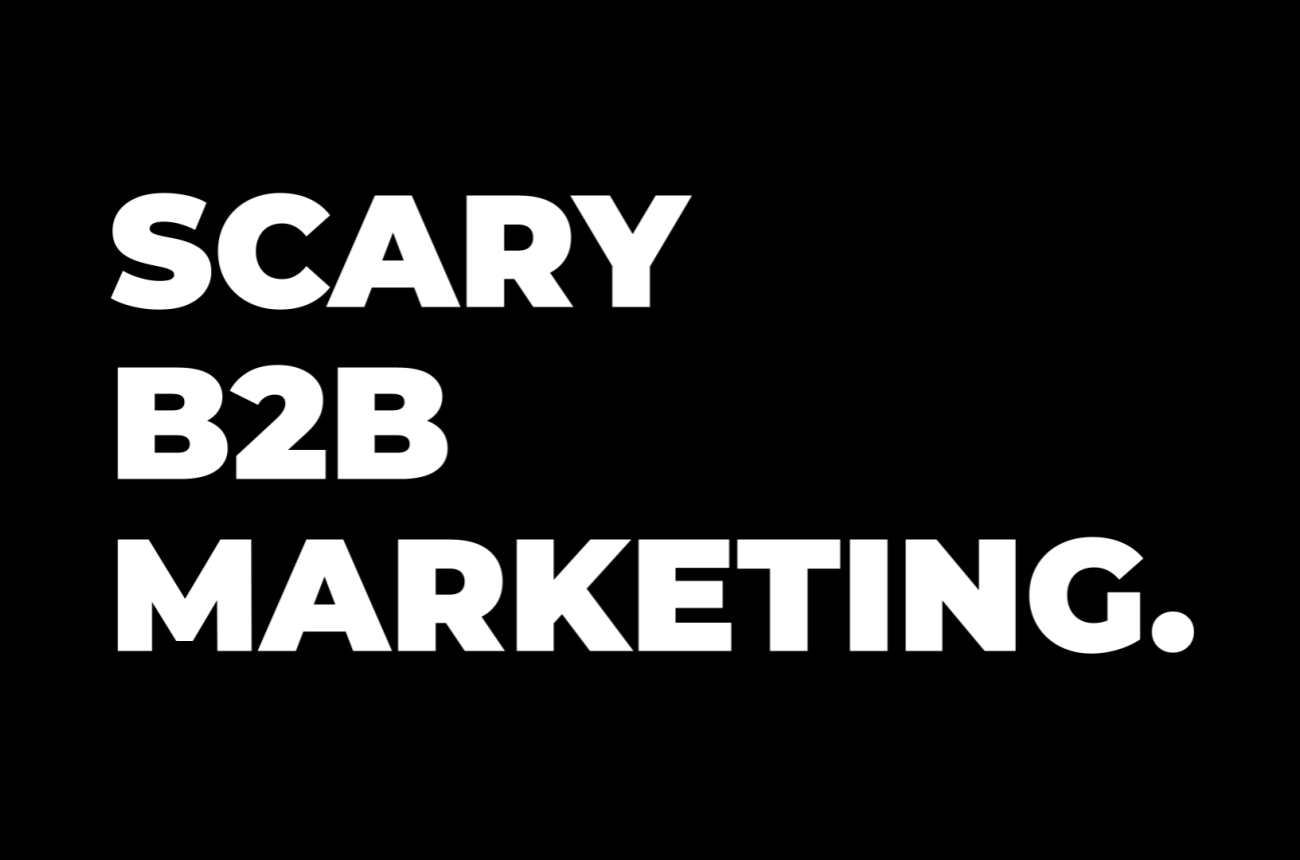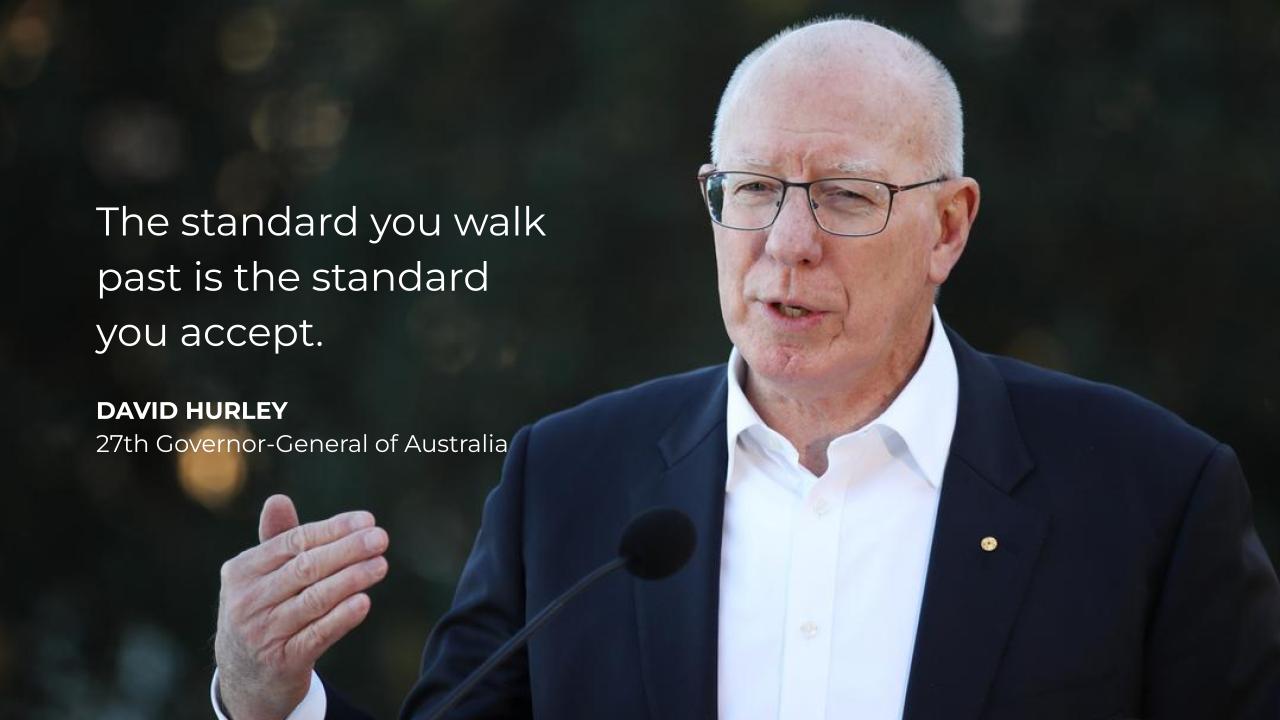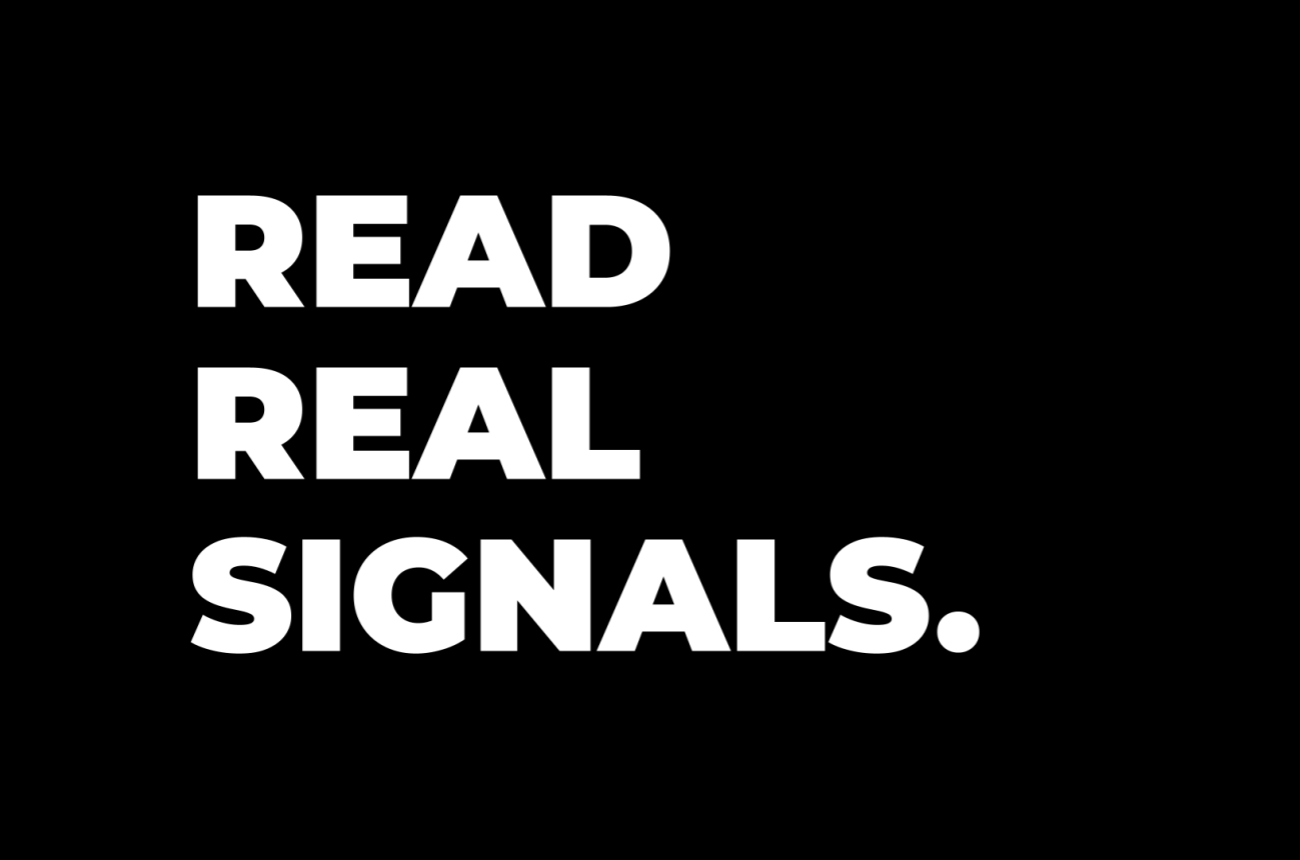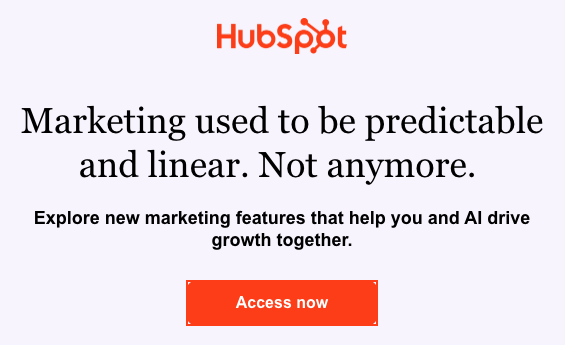Positioning, Messaging, and Branding for B2B tech companies. Keep it simple. Keep it real.

It’s Halloween, so let’s talk about what’s actually scary in B2B tech marketing right now. No, not costumes or tricks. Just the habits and status quo that keep showing up.
Last month, someone showed me their new content calendar. Dozens of blog posts and LinkedIn updates. All written in a few hours.
I asked one question: “Which one sounds like you?”
Silence.
When your default is “AI first, human second,” you’ve already lost.
Some of my clients still struggle with getting out of their own way. They know they need to, but they still resist. They see the light but revert to throwing darts in the dark.
I had a great chat this week with Jacob McGill over at 8020 Media and he said it best:
“It’s like they are waiting to get diabetes before they go on the diet.”
Jacob McGill, 8020 Media
For now, they continue doing what’s comfortable.
Status quo still reigns.
Gartner: Marketing budgets have remained flat at 7.7% of company revenue for the past two years.
McKinsey: Only 27% of organizations review all AI-generated content before it goes live. A similar share checks 20% or less.
Graphite: By November 2024, AI-generated content surpassed human-written. But search engines aren’t rewarding it. Across recent SERPs, about 86% of top-ranking articles are written by humans. Roughly only 14% are AI-generated.

Content Marketing Institute: Only 4% of B2B marketers report high trust in AI content (67% medium, 28% low).
When our own team doesn’t trust what we’re publishing, and our buyers don’t either, we have a brand problem masquerading as a content problem.
Like with any shiny new toy, we like to play.
I made this mistake with ChatGPT in the early days. Because I’m not a writer, I thought it could help me write articles.
How wrong I was.
Once you realize AI is just another tool, you soon realize it’s only as good as the person using it. And that comes with all kinds of limitations as mentioned in last week’s Razor.
“The trap isn’t that AI gets it wrong. The trap is that AI gets it average, and average feels good enough when you're moving fast. I’ve fallen into this trap. Everyone does. But once you see the patterns, you self-correct.”
For the record, Google doesn’t penalize content just because it’s AI-generated.
It penalizes content that’s low-quality, unoriginal, or spammy. And most AI content checks those boxes.
Google’s March 2024 update aimed to cut “unhelpful results” by roughly 40%. Sites scaling garbage with AI got hammered. Their January 2025 Quality Rater Guidelines now explicitly allow the “Lowest” rating for AI-generated content that lacks effort, originality, and value.
Once again, AI isn’t the problem. It’s lazy use of AI.
Although this has been written about numerous times, it’s worth repeating. Kind of like telling your kids to clean their rooms.
Most of your market is not going to buy your product today. If you’re lucky enough to demonstrate that you can reduce their risk of switching (Fear of F***ing Up), you could close roughly 5 out of every 100 opportunities at any given time.
But chasing hand-raisers quarter by quarter means you’re constantly chasing and starving.
Brand creates memory recall and earns confidence and trust in the rest of your potential market (the 95 out of 100) so when it’s time to upgrade or switch, they remember you.
But that’s not what’s happening.
GTM teams are using AI to scale content for the 5% while ignoring the 95%. More emails. More posts. More “personalized” outreach that reads exactly like everyone else’s.
“About 5% of your market is buying now; 95% isn’t. Brand memory wins the pick before the RFP.”
Content Marketing Institute
Forrester’s research confirms that differentiation happens during the different moments where brands show up.
The key is showing up.
Consistently.
The companies winning right now aren’t the ones with the best prompts. They document what makes them different before they handed anything to a model. They think before they act.
As mentioned last week, your best performers have tacit knowledge. Those are the judgment calls and micro-moves that make your frameworks work in your context and separate you from everyone else.
The companies that win also build brand memory with the 95%, not just harvesting the 5%. Think of it like reforestation. The trees you plant today will help you build tomorrow.
AI scales what’s documented. If your secret sauce lives in heads, AI won’t help you scale.
McKinsey’s research shows only 27% of organizations review all AI-created content before use. That’s not AI adoption. That’s abdication.
Here’s what every GTM leader should ask:
If your best rep quit tomorrow, could AI recreate what made them effective?
If your plan is “more content, faster,” you’re asking for a traffic dip and a trust hit.
If your plan is “document our unique value, build memory, prove impact,” you’re building something that compounds.
The scary part isn’t AI.
It’s the teams that keep treating it like a magic wand instead of a multiplier.
If you like this content, here are some more ways I can help:
Cheers!
This article is AC-A and published on LinkedIn. Join the conversation!

Tacit expertise is your advantage. That’s because AI scales what’s documented. If your secret sauce lives in heads, not docs, AI will scale your competitor’s average instead of your edge. Document tacit knowledge to capture the judgment calls that make your frameworks work. Then use AI to scale what’s true.
I’ve been following Rick Beato for years.
For those unfamiliar, Rick hosts an excellent YouTube channel for music professionals, amateurs, and geeks like me.
Being a musician and a marketer, Rick’s insights ring loud and clear with me when it comes to AI adoption.
In the video below, Rick said:
“A lot of musicians talk to me and they’re really freaking out about these [AI] programs.”
A lot of GTM teams are freaking out too.
You don’t need to be a musician to understand what Rick’s getting at. His real-world examples are not mutually exclusive to the music industry.
You may not know Max Martin, but you probably know the dozens of number-one songs he’s written or produced for Taylor Swift, The Weeknd, Ariana Grande, the list goes on.
He’s given fewer than five public interviews in the past decade. When he has talked, he shares high-level principles:
But the thousands of micro-decisions he makes in the studio? Those aren’t documented.
How does he know when to rewrite a pre-chorus for the 47th time? What makes him choose one word over another for sound versus meaning? When does he stop?
That level of expertise (the tacit, moment-to-moment judgment) isn’t captured.
Same with Serban Ghenea, who’s mixed most major pop hits of the past 25 years. He’s given maybe two interviews in twenty years. When he does talk, he says things like, “There’s no bag of tricks. The song dictates the tools.”
Rick’s point: Even when top practitioners share something, they don’t share the real how, the accumulated judgment that makes their work different.
That’s the nuance. That’s human.
And it’s not because you don’t have ANY documentation.
You probably have countless playbooks, specs, and guides.
But the micro-moves that separate your best performers from everyone else? Those aren’t captured.
That’s your Max Martin Gap.
The judgment calls that make your frameworks work in YOUR context.
Rick tested this with a simple example:
Why? Different training data.
ChatGPT trained heavily on Wikipedia. The other models trained on YouTube, where the answer exists in a popular video.
Same question. Different models. Different training data. Different results.
(If you want to see Rick break this down with the 52 factorial test, including his 9yo son reciting it years ago, watch the full video.)
Now think about your GTM motion:
If that’s not written down, AI can’t learn it.
More importantly: your next hire can’t either.
Let’s say you ask ChatGPT to draft a sales email. Build a positioning doc. Forecast pipeline. Whatever.
It spits out something fluent and confident.
Your team thinks, “Good enough.”
You ship it.
Except it’s generic. You just spent time and money to sound like everyone else.
(Ironically, B2B Tech Marketing has been doing this without AI for years!)
The trap isn’t that AI gets it wrong (it “can make mistakes”).
The trap is that AI gets it average, and average feels good enough when you’re moving fast.
I’ve fallen into this trap. Everyone does. But once you see the patterns, you self-correct (hopefully).
I use AI every day (like even this article). Not to write for me, but to help me ideate, research, fact-check, and provide structure.
(I have ADHD so every bit of structure helps... haha!)
I also acknowledge that I use AI as an assistant at the bottom of every article.
Instead of feeding AI generic prompts, train the model on actual documented process.
The “real how” from your best performers can help you stand out and scale faster than those who rewrite other blog posts and summarize frameworks they never use.
The companies that will win with AI aren’t the ones with the best prompts. They’re the ones who documented what makes them different before they handed anything to a model.
David Hurley said it best:

If we accept generic AI output because it’s fast, we’re accepting low-level standards... or no standards at all.
Rick’s video is a good reminder that the AI limitations in the music industry applies to any industry.
We already know how AI is replacing manual tasks (like every other major tech revolution).
But will it ever be able to replace the tacit nuance that comes from human creativity?
We don’t need to freak out.
We just need to be creative.
If you like this content, here are some more ways I can help:
Cheers!
This article is AC-A and published on LinkedIn. Join the conversation!

Form fills and PDF downloads indicate curiosity, not intent. Treat forms as supporting evidence inside a broader pattern. Route on patterns for speed. Use causality to decide where to invest.
GTM teams are coming to realize buyers don’t move in a straight line.
As decisions get real, more time can pass and more stakeholders can show up.
The part many still miss: a contact form fill or a gated PDF download doesn’t change any of that. It’s a weak signal until it’s part of a bigger picture.
Paula Skaper, over at 33 Dolphins, posted this LinkedIn comment on a recent article:
“Would love to see a follow up on buying signals. Something tells me ‘filling in a form to download a lead magnet’ is guaranteed to be on the list.”
She’s right.
An eBook gate, by itself, is weak. It proves someone traded an email for content. It does not prove buying intent.
Some forms can be strong: demo request, pricing/config quote, security questionnaire, RFP upload. They get stronger when surrounded by hotter activity in a short window.
Buyers don’t march left-to-right when we want them to.
They loop. They backtrack. They add and remove people. They rinse and repeat on their time, not ours.

Read the pattern across people, content, and time, not a sequence.
Our job is to spot momentum, not enforce a linear path.
Routing rule (make it binary):
Everything else goes to nurture until the pattern appears.
“We need to stop tossing early interest over the fence. Marketers must own that signal until it’s contextualized, confirmed, and validated.”
Kerry Cunningham, 6sense
Patterns are correlation. That’s fine for routing fast. When it’s time to fund programs, you need causal analysis.
Simple play:
For more detail, check out the 6-Part Causal CMO series I did with Mark Stouse.
If a signal doesn’t move win rate or forecast quality, downgrade it.
Keep the list short. Keep it honest.
Adopt the trigger for 30 days. Tag “Signal of Record” on every opp.
Share the lift.
If you like this content, here are some more ways I can help:
Cheers!
This article is AC-A and published on LinkedIn. Join the conversation!

Contrary to what martech tools like HubSpot say, marketing has never been predictable or linear. And it doesn’t drive revenue directly. It multiplies sales effectiveness, shortens the path to “yes,” and protects future growth. Here’s what every B2B tech leader should know.
Last week, HubSpot sent out this email:

The gist of it was to promote their new AI-powered features, as if AI will make marketing predictable like it once was.
“Marketing used to be predictable and linear. Not anymore.”
Really?
Um, Marketing was never predictable. Never linear. Not in B2B, not in B2C, not anywhere.
And framing it this way is exactly why companies waste time and money chasing shortcuts.
For the past 15–20 years, B2B marketing has been hooked on “performance marketing” because of promises made by software companies (HubSpot is not mutually exclusive here).
Marketers were sold a bill of goods: predictable funnels, lead-to-revenue models, and real-time multi-touch attribution displayed on pretty dashboards.
Hey, I’m just as guilty. I drank the Kool-Aid too.
But the results? Nothing to be excited about.
Research and data analysis have proven the opposite:
The idea that marketing once marched buyers in a straight line from awareness to deal? That's a fairy tale.
And the idea that AI will restore predictability? Wishful thinking.
Here’s the real distinction every executive should know:
Marketing creates the conditions for sales to succeed:
But it does not “drive” revenue on its own. Presenting it that way sets CMOs up against an impossible benchmark, one the CFO and board will never buy.
Dale W. Harrison explains this clearly in How Marketing Creates Revenue.
His model shows the incremental effects of sales, performance marketing, and brand marketing combined:
This proves that marketing is a non-linear multiplier of a linear function like sales. It produces zero direct revenue, but it radically amplifies sales.
PS: Dale’s The Mythology of Brand Growth is an insightful follow-up to Byron Sharp’s book, How Brands Grow (mentioned above). Definitely worth reading.
Mark Stouse and I have discussed this many times.
He reinforces this reality with two important points:
This is CFO-friendly language: delayed, compounding effects that expand efficiency and probability.
The “predictable funnel” story keeps getting pushed for a number of reasons.
This last point matters. When we stop questioning, we stop leading. And when we outsource our thinking to vendors, we reduce marketing to a support function instead of a growth function.
The messy reality? It’s inherent in the system.
But that’s okay! Because the real job of marketing is to:
This is how CEOs and CFOs should frame marketing internally: as a capital investment in future efficiency, not as a vending machine for leads.
If you lead a B2B tech company, here are three shifts worth making:
1. Stop asking for linear attribution.
2. Treat marketing outcomes as probabilistic not deterministic.
3. Listen to Peter Drucker: Reframe marketing as capital allocation, not cost.
And here’s another important point:
Marketing must raise the bar. We’ve grown complacent. Too often we accept whatever martech vendors tell us instead of doing the harder work of insight, strategy, positioning, and brand-building. Marketing can only reclaim its full power when we start asking tougher questions again.
Marketing is not predictable or linear. It never was.
It’s complex and messy.
Why? Because people are complex, irrational, and messy.
The power of marketing lies in its ability to compound over time, multiply sales, and shape the likelihood of revenue.
If you like this content, here are some more ways I can help:
Cheers!
This article is AC-A and published on LinkedIn. Join the conversation!

B2B marketing and sales systems have been built around funnels, gated content, and MQLs. Yet that’s not how marketers or salespeople buy themselves. Research from Gartner, The CMO Survey, 6sense, and TrustRadius shows that buyers constantly move in and out of non-linear journeys. Most prefer self-serve information and make decisions based on brand familiarity. To fix the disconnect, B2B leaders need to rebalance short-term lead gen with long-term brand building, align metrics to real buying signals, and simplify the path to purchase... just like how they would buy!
Marketers don’t buy the way they market.
Salespeople don’t buy the way they sell.
And yet this is the system they keep building. Funnels. Gates. Attribution reports. MQL handoffs.
If we wouldn’t buy this way ourselves, why do we expect our customers to?

For the past 15-20 years, B2B Marketing has drifted from strategy to tactics.
The 4Ps still exist, but most teams only control one of them: Promotion.
Pricing lives with Finance. Place lives with Ops. Product lives with Product.
According to MarketingWeek, just over a quarter of marketers (25.8%) influence pricing, and only 7.2% play a role in distribution.
That vacuum gave SaaS a chance to redefine marketing as lead generation. “Demand gen” became another name for filling forms. Forrester and 6sense's Kerry Cunningham have both argued that MQLs don’t reflect how people actually buy.
Funnels and attribution models look pretty on a dashboard. But buyers don’t move in straight lines.
Research from Gartner shows the B2B journey is non-linear (hasn’t it always been?!?). Buyers have always looped, revisited, and often repeated steps out of order over weeks, months, and even years before creating their Day 1 list.
And in complex B2B deals, 77% of buyers say their latest purchase was “very complex or difficult”, with 6–10 decision makers involved and most research done before speaking to sales (AdvertisingWeek).
So while GTM teams celebrate form fills, most real buying happens elsewhere.
For CEOs: Wasted spend. Growth slows when funnels don’t reflect reality.
For CFOs: Inefficiency. Chasing MQLs inflates CAC and distorts ROI.
For CMOs: Frustration. Defending metrics everyone knows don’t map to revenue.
There is a way forward.
Brand + Buying Signals + Sales Alignment = Better Buying Experience
The good news is many seasoned B2B Marketing leaders are calling out the elephant and getting back to basics.
The mood is changing.
For more, dive deeper with the End Of MQLs series.
in a nutshell, Marketers don’t buy the way they market. Salespeople don’t buy the way they sell.
And just like the buyers they are marketing and selling to, they never have either!
It’s time to stop forcing buyers through systems we wouldn’t tolerate ourselves.
The best time to reset was yesterday.
The second-best time is now.
If you like this content, here are some more ways I can help:
Cheers!
This article is AC-A and published on LinkedIn. Join the conversation!

By Gerard Pietrykiewicz and Achim Klor
Achim is a fractional CMO who helps B2B GTM teams with brand-building and AI adoption. Gerard is a seasoned project manager and executive coach helping teams deliver software that actually works.
AI adoption gets stalled by leadership gaps: confusing policies, employee fear, and leaders who say “go” but don’t show how. If this feels a bit like Groundhog Day, you’re not alone. We’ve seen similar adoption challenges with desktop publishing, the Internet and World Wide Web, and blockchain. The technology is ready, but organizations stumble on the people side. This article looks at what leaders can do right now to remove those barriers and make adoption a little less stressful.
Jim Collins, in How The Mighty Fall, describes how once-great companies decline: hubris born of success, denial of risk, and grasping for silver bullets instead of facing reality. AI adoption sits at a similar crossroads. Companies that wait and assume their past success buys them time risk sliding down a similar path.
Reset (5 min):
Decisions today (10 min):
Guardrails (10 min):
Metrics (5 min):
Employees avoid tools they don’t understand. If your AI usage rules look like a legal brief, adoption will stall. It's hard for any company to have a policy loose enough to allow for easy adoption and experimentation, yet restrictive enough to prevent critical data leakage.
Large corporations often have the budget, legal teams, and even their own data centers to set up AI policies and infrastructure. That gives them speed at scale.
Smaller companies are technically more nimble, but without sufficient resources, they often default to over-restriction, sometimes banning AI entirely out of fear of risk. That means lost productivity and missed learning opportunities.
Opportunity: Make policies visual, clear, and quick to navigate. The goal isn’t control. It’s confidence. Guidance like the NIST AI Risk Management Framework shows how clarity enables trustworthy, scalable use (NIST).
Employees fear what they don’t understand. And one-size-fits-all training doesn’t help.
When people see AI applied to their specific role (automating a report, simplifying customer emails), that fear turns into enthusiasm.
Pilot programs work. Early adopters can demonstrate real use cases, and their wins spread fast inside the org.
Opportunity: Treat those early adopters as internal champions. Prosci’s research shows “change agents” accelerate adoption (Prosci). Then turn those wins into short internal stories and customer-facing examples. That’s how adoption builds brand credibility, not just productivity.
When executives hesitate, teams hesitate. The reverse is also true: when leaders use AI themselves, adoption accelerates.
Research on organizational change is clear: active, visible sponsorship is a top success factor (Prosci). It signals that experimentation is safe and expected.
And there’s an external benefit too. Leaders who show their own AI use give customers and partners confidence. It’s a market signal.
Opportunity: Leaders can’t delegate this. They need to be participants, not just sponsors.
To make AI adoption successful, leaders must create an environment where experimentation feels safe and useful.
The parallels to earlier waves of tech adoption are uncanny: the ones who figured this out first didn’t just get more efficient. They were remembered as the ones who defined the category because they were more effective adopting the tech.
The risk of waiting isn’t just lost productivity. It’s losing the perception battle before you even start. Credible stories and visible leadership shape buying decisions and long-term trust (Edelman–LinkedIn).
Leaders: simplify, experiment, participate, and share your wins. Your teams and your customers will thank you.
If you like this co-authored content, here are some more ways we can help:
Cheers!
This article is AC-A and published on LinkedIn. Join the conversation!